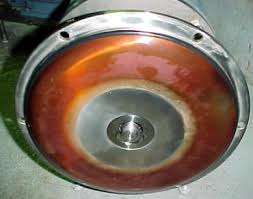Understanding Rouging: A Comprehensive Overview
What is the Concept of Rouging?
Rouging is a crucial process in agriculture and horticulture, aimed at ensuring the health and uniformity of crop fields and plots. It involves the identification and removal of rogue plants, which can include noxious weeds, off-type varieties, volunteer crops, and other unwanted plants. By removing these plants, farmers can maintain the purity and consistency of the crop, minimizing the risk of contamination and reducing potential legal liabilities related to seed laws. Rouging is essential for maintaining the integrity of a crop, ensuring that only the desired plants thrive in the field.
Rouging in Agriculture: Ensuring Field Purity
The Process of Rouging in Agriculture
In agriculture, rouging is a methodical process that begins with the identification of unwanted plants. These could be weeds, plants of a different variety, or any other species that do not belong to the intended crop. Once identified, these rogue plants are carefully removed, including their roots, tubers, and any associated seed pieces. This thorough removal process ensures that the rogue plants do not regenerate or spread, preserving the desired crop’s purity and yield.
Importance of Rouging in Seed Law Compliance
One of the significant benefits of rouging is its role in complying with seed laws. Seed laws often mandate that crops must be free from contamination by other species or varieties. By performing regular rouging, farmers can ensure that their crops meet these legal standards, thereby avoiding potential legal issues and ensuring that their products are market-ready.
Rouging in Stainless Steel: Understanding the Corrosion Process
What is Rouging of Stainless Steel?
Rouging in stainless steel refers to a form of corrosion that results in the formation of iron oxide, hydroxide, or carbonate on the metal’s surface. This corrosion can occur due to various factors, including contamination from external sources or the breakdown of the passive layer that normally protects stainless steel. The resulting discoloration, often red or brown, can vary depending on the type of corrosion products and the environmental conditions.
Causes of Rouging in Stainless Steel
Rouging can occur in stainless steel due to iron contamination during welding or other fabrication processes. When non-stainless steel materials are welded to or near stainless steel surfaces, they can leave behind low-chromium areas that are more susceptible to corrosion. Over time, these areas can develop rouge, compromising the integrity and appearance of the stainless steel.
Types of Rouging in Stainless Steel
Class I Rouging
Class I rouging occurs when iron oxides deposit on the surface of stainless steel without altering the underlying metal’s Cr/Fe (Chromium/Iron) ratio. This type of rouging is typically superficial and does not penetrate deeply into the stainless steel surface.
Class II Rouging
Class II rouging involves the formation of iron particles on stainless steel surfaces that have not been properly passivated. The passivation process is essential for creating a protective oxide layer on stainless steel. If this layer is compromised, the formation of iron particles can lead to an altered Cr/Fe ratio, making the steel more vulnerable to corrosion.
Class III Rouging
Class III rouging is the result of iron oxide (or scale) formation on stainless steel surfaces, typically in high-temperature steam systems. This type of rouging is more severe, as it often alters the Cr/Fe ratio of the protective film on the steel, leading to significant corrosion and potential damage to the equipment.
Rouging vs. Roguing: Similar Terms, Different Applications
Understanding the Roguing Method
While rouging and roguing may sound similar, they refer to different processes. Roguing is a method used in agriculture, particularly in seed production, where plants that are diseased, weak, or otherwise undesirable are identified, removed, and disposed of. This process ensures that only the healthiest and most desirable plants are left in the field, enhancing the quality and consistency of the crop.
Steps in the Roguing Process
The roguing process involves three main steps:
- Identification: Spotting and marking plants that need to be removed.
- Removal: Uprooting the identified plants, ensuring that all parts of the plant, including roots and tubers, are completely removed.
- Disposal: Discarding the removed plant material at a safe distance from the field to prevent any chance of recontamination.
Conclusion
Whether in agriculture or metallurgy, rouging is a critical process that ensures the integrity, quality, and safety of the products involved. In agriculture, it helps maintain crop purity and compliance with seed laws, while in stainless steel, it addresses corrosion issues that can affect the performance and longevity of the material. Understanding the concept and applications of rouging can help in making informed decisions in both fields, ensuring that the final products meet the desired standards and requirements.




